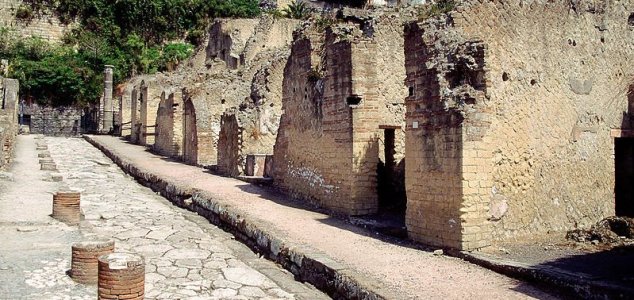
Like Pompeii, Herculaneum was buried in volcanic ash.
Scrolls from the time of the volcanic disaster that buried Pompeii have been examined by scientists.
The ancient scrolls, which were buried in ash and dust when Mount Vesuvius erupted to devastating effect back in AD79, have been described by scientists as an ‘archaeological wonder’.
Many of the 1,800 individual papyri, which were discovered in Herculaneum during the 18th century, had either been badly damaged or destroyed completely due to failed attempts to read them.
Now however scientists utilising modern technologies such as the European synchrotron – a machine that produces x-rays billions of times more powerful than those used in hospitals – have finally started piecing together some of the text contained inside the remaining scrolls.
Particularly surprising was the discovery that the ink used on the scrolls contained quantities of lead and metal – a find that has pushed back the first known use of metallic inks by several centuries.
The discovery will also help the scientists to analyze the scrolls because it means that they can better calibrate their equipment to pick up this particular type of ink on the parchment.
“Until now, I hadn’t expected to be able to read any of these scrolls from the inside, without damage to them, in my own lifetime,” said Professor Dirk Obbink. “But now I do.”
Originally posted 2016-03-30 20:49:05. Republished by Blog Post Promoter












